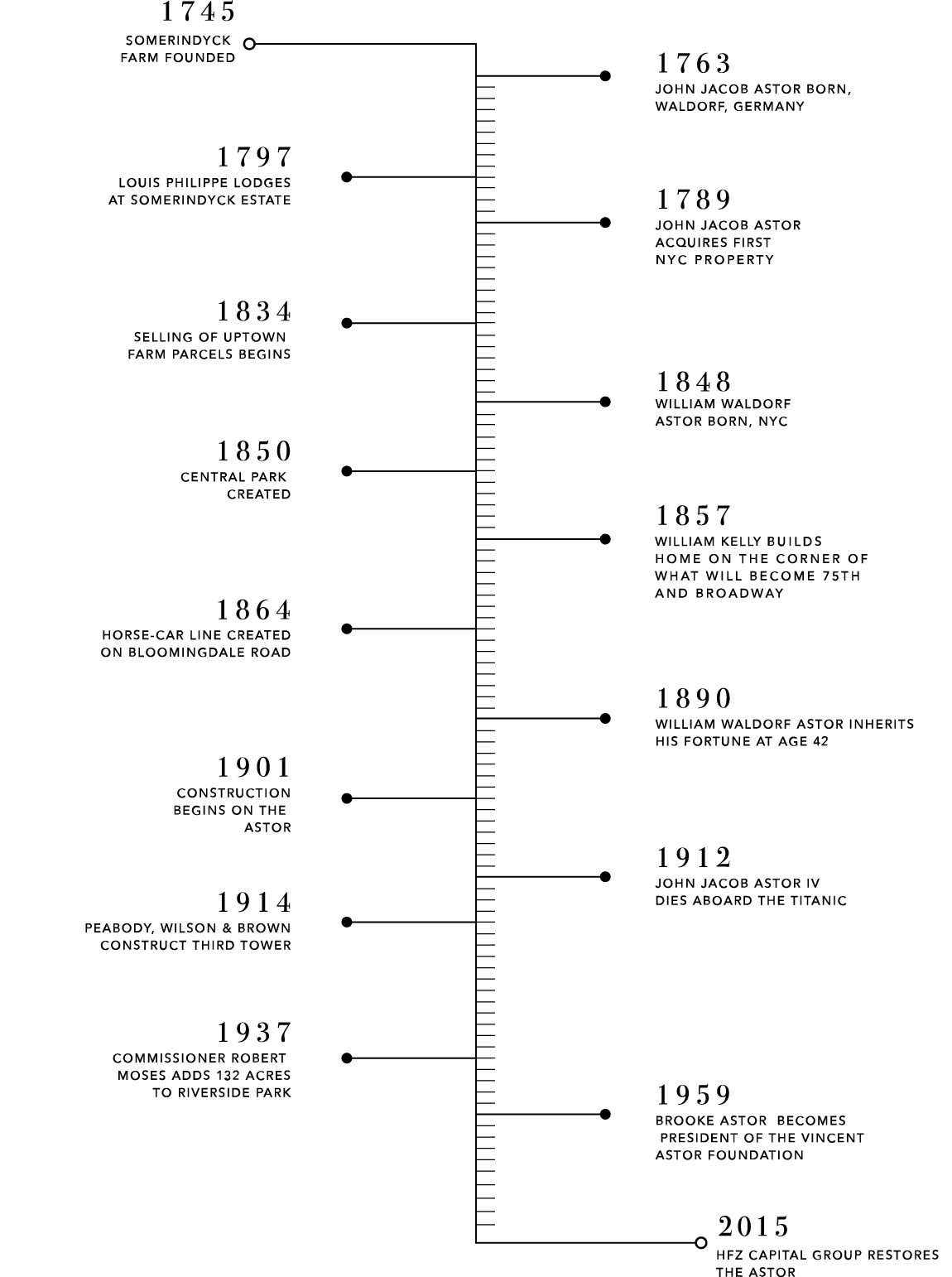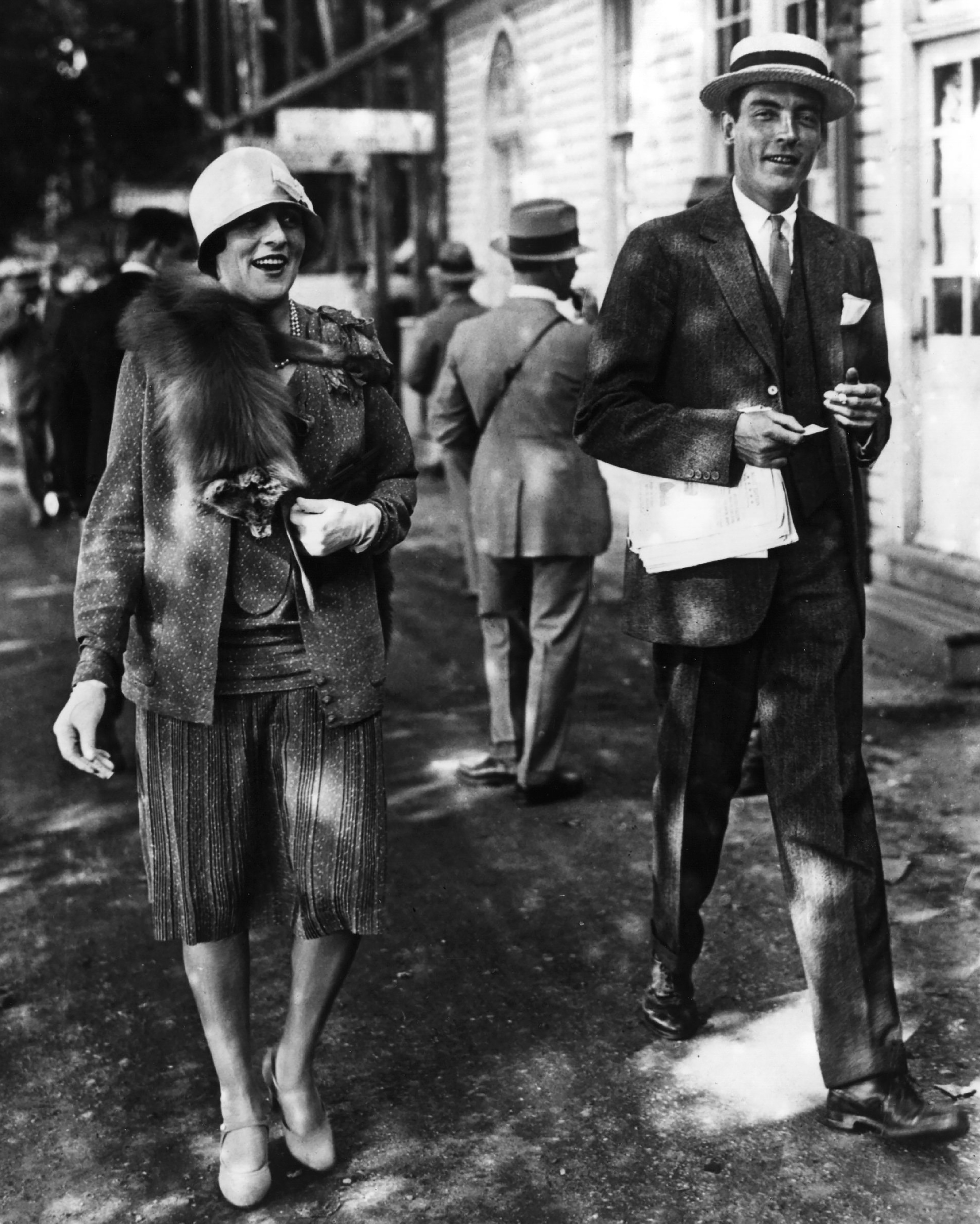The Astor Family
The Astor is more than a building. Its name is ubiquitous with New York City. Its gracious residences are steeped in a celebrated story that dates back to 1901. Marked by wealth, parties and fame, The Astor’s exquisite past stirs up its future. The value of a home here transcends anything monetary – it’s a rare, authentic piece of the city’s legacy.
The Astor family, a New York dynasty whose name and influence was imprinted across business, politics, and society throughout the nineteenth and twentieth centuries, were known as “the landlords of New York.” During the Gilded, Age, through brilliant business deals, great fortune, famed social presence, and glamorous ways, they set the stage for an enviable style of uptown living. In fact, in 1890, an expert calculated that they owned one-twentieth of New York City real estate. Among the marquee properties still standing today are the Waldorf-Astoria and The St. Regis hotels. Another remaining jewel is a striking block front trio of interconnected residential buildings running from the corner of 75th to 76th Streets on Broadway, better known as The Astor.
The building is a product of the eponymous family whose name and influence is forever imprinted in the city’s business, politics, and society. To this day, having a residence in The Astor conveys a certain pedigree and status.
The Astor family, a New York dynasty whose name and influence was imprinted across business, politics, and society throughout the nineteenth and twentieth centuries, were known as “the landlords of New York.” During the Gilded, Age, through brilliant business deals, great fortune, famed social presence, and glamorous ways, they set the stage for an enviable style of uptown living. In fact, in 1890, an expert calculated that they owned one-twentieth of New York City real estate. Among the marquee properties still standing today are the Waldorf-Astoria and The St. Regis hotels. Another remaining jewel is a striking block front trio of interconnected residential buildings running from the corner of 75th to 76th Streets on Broadway, better known as The Astor.
The building is a product of the eponymous family whose name and influence is forever imprinted in the city’s business, politics, and society. To this day, having a residence in The Astor conveys a certain pedigree and status.
Development Legacy
William Waldorf Astor hired the ubiquitous New York City architects Clinton and Russell to design the two southern towers of The Astor in 1901. In 1914, William Waldorf Astor hired another Gilded Age architecture firm, Peabody, Wilson & Brown, to design a third tower for The Astor. The third tower, completed within a year, is structurally and aesthetically similar to both original towers. This “newer tower” is four stories taller as it accommodated larger penthouse-style apartments for the wealthy businessmen who were becoming increasingly attracted to the Upper West Side. This attraction was based on its close proximity to Central Park, the first subway line, and bustling Broadway, which served as the primary corridor connecting uptown to Wall Street.
Legacy Properties
- The Astor, 1901
- Astor House Hotel, 1836
- Astor Place
- The Astor Opera House, 1847
- The Astor Library, 1854
- THE WALDORF HOTEL, 1893
- The Astor Mansion, 1893
- The Astoria Hotel, 1897
- New York Public Library, 1897
- The St. Regis Hotel, 1904
- The Knickerbocker Hotel, 1906
- The Apthorp, 1908
- 120 East End Avenue, 1931
The Astor, 1901

The buildings that currently stand were built starting in 1901 for William Waldorf Astor, son of John Jacob Astor. Construction began in 1901 and, two south towers were completed in 1905 by Clinton & Russell. In 1914, William Waldorf Astor hired another Gilded Age architecture firm, Peabody, Wilson & Brown, to design a third tower for The Astor.
TIMELINE



